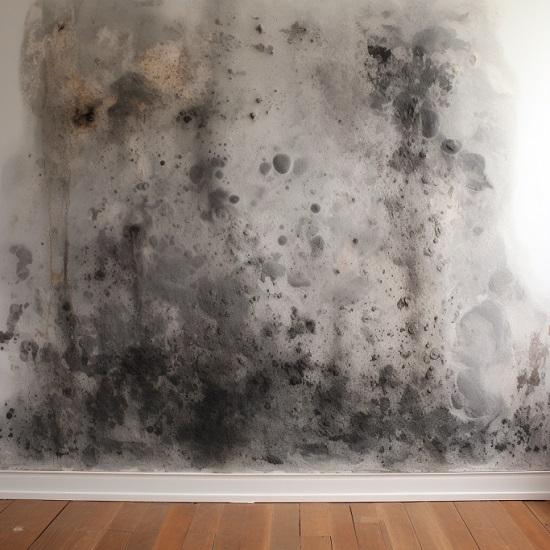Crafting an In-depth Post Mold Remediation Report
Crafting an In-depth Post Mold Remediation Report
Blog Article
Specialist Tips for Post Mold And Mildew Removal Success
In the world of mold removal, successfully getting rid of mold and mildew is only half the battle; the real challenge depends on stopping its reappearance. Post-remediation initiatives play a critical role in guaranteeing a mold-free setting in the long-term. By adhering to professional pointers and finest methods, individuals can protect their spaces against mold resurgence and keep a healthy and balanced indoor atmosphere. It is in this phase of the removal process that focus to information and proactive actions truly make a difference.
Screen Moisture Levels Frequently
After finishing mold and mildew removal treatments, maintaining ideal humidity levels is critical to prevent mold and mildew re-growth and ensure a healthy and balanced interior setting. High humidity degrees above 60% produce a helpful environment for mold to prosper, making routine keeping track of a proactive procedure to avoid any kind of future mold and mildew problems.
Furthermore, establishing a routine timetable for humidity checks, specifically in risky locations such as bathrooms, cooking areas, and cellars, is a proactive technique to mold avoidance. By continually monitoring humidity levels, home owners can properly mitigate the risk of mold reoccurrence and keep a healthy and balanced interior environment post-remediation.
Conduct Thorough Inspections Post-Remediation
Complying with the conclusion of mold remediation treatments, it is imperative to carry out thorough evaluations to validate the effectiveness of the remediation procedure. These post-remediation evaluations are important in ensuring that the mold and mildew problem has been successfully addressed which there is no reappearance or remaining mold and mildew growth. Evaluations should be accomplished by certified experts who have competence in recognizing mold and examining indoor air quality.
During these evaluations, different methods such as aesthetic analyses, air tasting, and surface area sampling may be utilized to extensively examine the remediated areas. Aesthetic assessments include a thorough evaluation of the facilities to examine for any visible signs of mold development or water damages. Air tasting assists in figuring out the airborne mold and mildew spore degrees, while surface tasting can detect mold particles on surfaces.
Implement Proper Ventilation Techniques
After ensuring the efficiency of the mold and mildew remediation process through complete assessments, the next essential action is to concentrate on carrying out appropriate ventilation strategies. Appropriate ventilation is necessary in stopping mold reoccurrence by managing dampness levels and promoting air circulation.
Correct ventilation not only aids in protecting against mold growth yet likewise contributes to the general wellness and comfort of owners. By making certain adequate air flow throughout the building, you can minimize the danger of mold regrowth and create a much healthier living setting.

Usage Mold-Resistant Materials for Repairs
To enhance the long-term efficiency of mold and mildew remediation initiatives, including mold-resistant materials for repair work is important in alleviating the threat of future mold and mildew development. Mold-resistant materials are created to endure moisture and prevent mold development, making them a vital choice for areas susceptible to moisture and moisture. When fixing areas impacted by mold, utilizing products such as mold-resistant drywall, mold-resistant paints, and next page mold-resistant caulking can aid stop mold and mildew reoccurrence.
Mold-resistant drywall is an outstanding option to typical drywall in locations like restrooms and cellars where moisture degrees are greater. This kind of drywall has an unique finish that withstands mold growth even when exposed to damp conditions. In addition, making use of mold-resistant paints containing antimicrobial representatives can better inhibit mold growth on ceilings and walls.
In locations where moisture prevails, such as kitchens and bathrooms, utilizing mold-resistant caulking around bathtubs, sinks, and windows can help seal out water and stop mold from taking hold in cracks and holes. By buying these mold-resistant products during repair services post-remediation, you can dramatically reduce the chance of future mold and mildew issues and preserve a healthier interior setting.
Maintain Tidiness and Address Water Issues
Making sure sanitation and without delay attending to water problems are basic practices to support in guarding indoor rooms from mold reinfestation. After mold remediation, it is essential to keep a clean environment to prevent the regrowth of mold (Post Remediation verification). Normal cleaning, dusting, and vacuuming can aid eliminate any kind of sticking around mold spores and stop them from multiplying and settling. Furthermore, maintaining indoor areas dry and attending to any type of water issues promptly is necessary in mold and mildew prevention. Leakages, water invasion, or high humidity levels can produce the perfect breeding place for mold and mildew, so it is critical to fix any kind of water-related troubles instantly.
To keep tidiness, consider making use of HEPA filters in vacuum cleaners and air purifiers to catch mold and mildew spores and stop their blood circulation airborne. black mold removal Furthermore, guaranteeing proper air flow in areas susceptible to moisture build-up, such as kitchen areas and shower rooms, can aid maintain humidity degrees in check. By staying alert regarding cleanliness and attending to water problems immediately, you can properly avoid mold and mildew reinfestation and preserve a healthy indoor environment.
Conclusion

In the realm of mold and mildew remediation, successfully getting rid of mold and mildew is just half the fight; the true difficulty exists in preventing its reappearance. After completing mold remediation treatments, keeping optimum humidity degrees is crucial to stop mold and mildew re-growth and ensure a healthy indoor atmosphere. High moisture degrees over 60% produce a favorable setting for mold and mildew to flourish, making normal checking a proactive measure to avoid any type of future mold problems.
To improve the long-term effectiveness of mold and mildew removal initiatives, integrating mold-resistant products for repairs is important in alleviating the risk of future mold growth. After mold removal, it is vital to maintain a tidy setting to stop the regrowth of mold and mildew.
Report this page